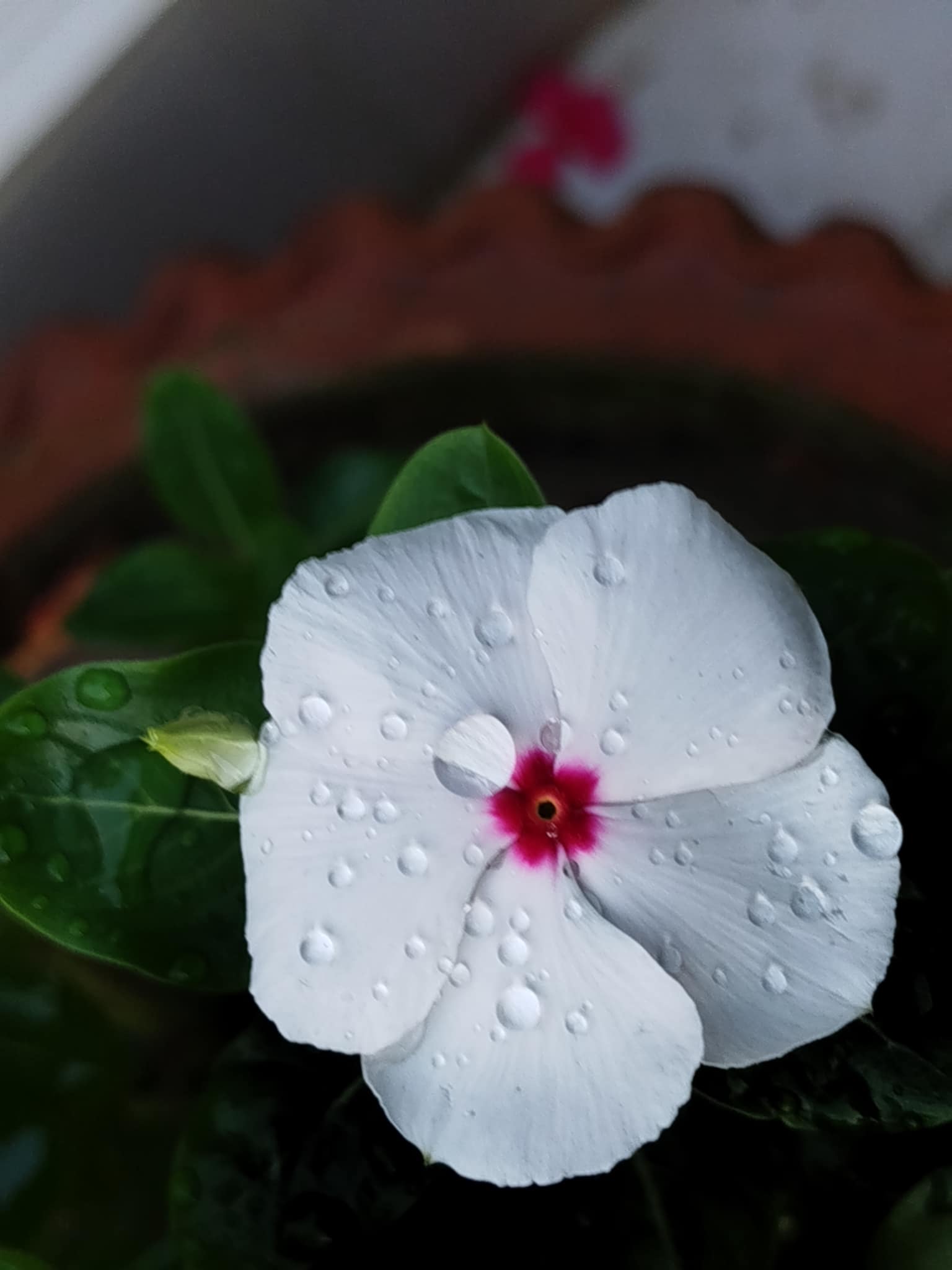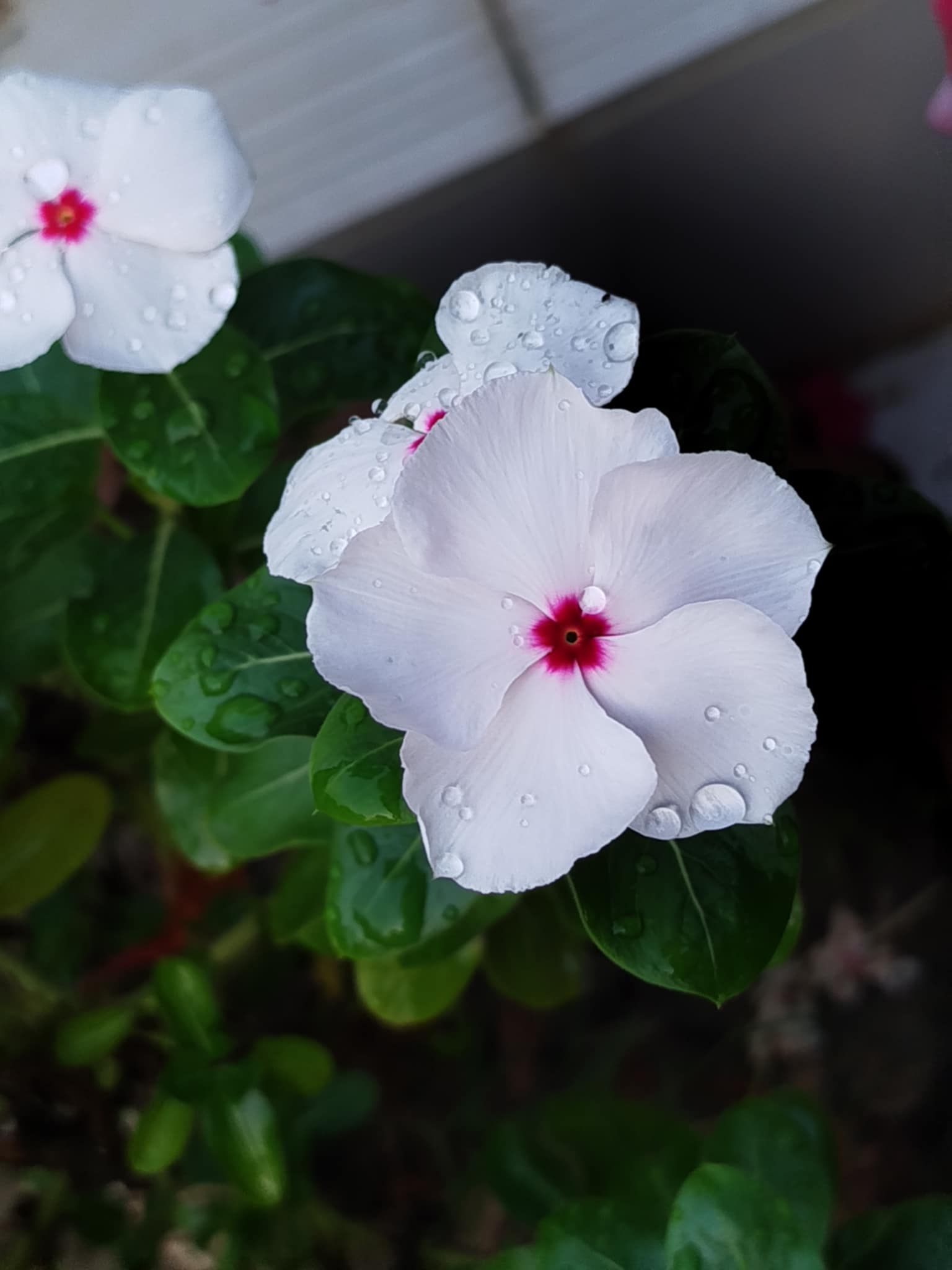Introduction to Nayantara flower


The flower seen in this picture is called the white periwinkle flower (scientific name: Catharanthus roseus). It is a very well-known and popular flower, which is often seen in our country's home gardens, rooftop gardens, or roadsides. This flower is particularly important due to its unique appearance and medicinal properties. It is also called "white chrysanthemum", "periwinkle", or "vinca" depending on the place. Below is a detailed discussion about this beautiful flower.
📌 Introduction to periwinkle flower
The periwinkle flower plant is an evergreen shrub belonging to the Apocynaceae family. Although its scientific name is Catharanthus roseus, it was previously also called Vinca rosea. The plant usually grows 1 to 2 feet tall and blooms throughout the year. The flower petals are usually five and have a pink or purple eye-like part in the middle, which makes it different from other flowers. This round center is like the star of the eye — hence its name "periwinkle".
🌿 Tree Structure and Characteristics
The Nayantara tree is a branched shrub. Its leaves are medium-sized, oval, bright green and smooth. Every part, from the leaves to the trunk, contains some sticky sap. The flowers usually bloom in the morning and become more vibrant when exposed to sunlight.
In addition to the white Nayantara, pink, purple, light purple, or reddish varieties of this flower are also seen. However, the white flower is especially appreciated for its purity, peaceful beauty and medicinal properties.
🌱 Distribution and Habitat
Although Nayantara is originally a plant from the Madagascar region, it has now spread to many countries around the world, including Asia, Africa, and America. This flower is now so well known in Bangladesh that it is considered our country's own flower. It grows well in any type of soil, especially in sunny places. With little care, this flower can last for years.
🌼 Medicinal properties and medical uses
The Nayantara flower is not only beautiful to look at, it also has extraordinary medicinal properties. It has been used in Ayurveda and homeopathy since ancient times. Some important medicinal properties are highlighted below:
Cancer prevention: Two alkaloids called Vincristine and Vinblastine, obtained from the Nayantara plant, are used in cancer treatment. This ingredient is especially effective in blood cancer and Hodgkin's lymphoma.
Diabetes control: Nayantara leaf juice is considered beneficial for diabetic patients. However, it should not be taken without the advice of a doctor.
Blood pressure control: The plant extract can help reduce blood pressure.
Skin diseases: Nayantara flower and leaf extract can be used to relieve skin diseases such as itching, boils, eczema.
Fever and cold: Leaf juice is often used to relieve fever or cold-related problems.
🎨 Beauty and Decorative Use
White Nayantara flowers are considered a symbol of peace and purity in addition to enhancing the beauty of the house. When planted in small tubs or fields in the balcony of the house, roof garden, office corner or educational institutions, the environment is also fresh. Many people use this flower to make flower bouquets, especially on auspicious occasions.
🧠 Nayantara in culture and literature
Nayantara flowers have been used in Bengali poetry, songs and literature as a symbol of calm beauty, solitude and tender emotions of the mind. Many poets and writers have found the silence and depth of nature in this flower. White Nayantara in particular is an expression of a kind of carefree beauty.
☘️ Eco-friendly tree
On the one hand, the Nayantara tree is beneficial for the environment, on the other hand, it grows without the need for pesticides and chemical fertilizers. This tree can survive on little water and sun, so it is suitable for planting in water-stressed areas. This flower is a favorite of bees and butterflies, so it helps in the pollination process in the environment.
🔄 Planting and Care
The Nayantara plant can be easily grown from seeds. April to June is the best time to plant. It grows quickly if it receives well-drained soil, light irrigation, and direct sunlight.
Regular weeding and occasional use of a little organic fertilizer will keep the plant fresher. This plant does not grow well in excess water or shady places.
⚠️ Some precautions
Although Nayantara is a medicinal plant, not all its parts are suitable for consumption. This plant should be kept away from children in particular. Eating raw leaves or flowers can cause vomiting, dizziness, or skin allergies. Therefore, it is important to consult an expert before using any type of herb.
✅ Conclusion
The white Nayantara flower is a unique creation of nature. Due to its beauty, medicinal properties and ease of availability, it is a familiar sight in every home garden in Bangladesh. On the one hand, it calms our minds, on the other hand, the importance of this flower in medical science is very valuable. We should preserve and care for the Nayantara flower with more care, so that future generations can also enjoy this beauty and benefits.